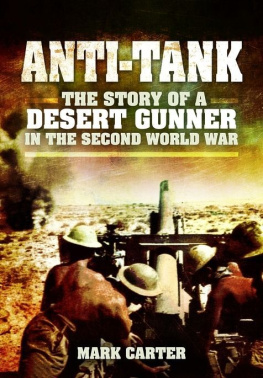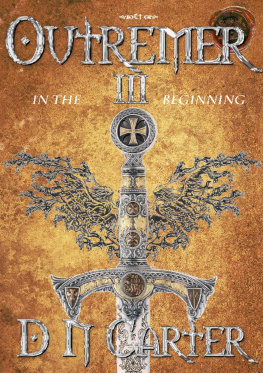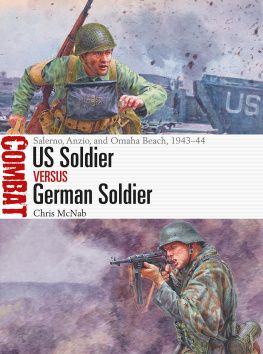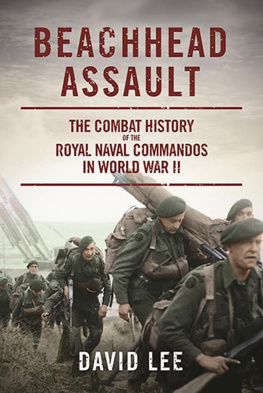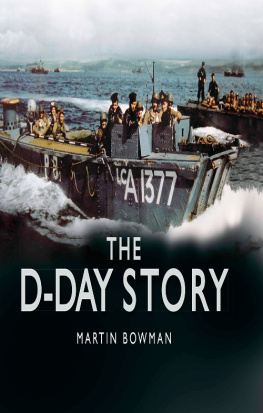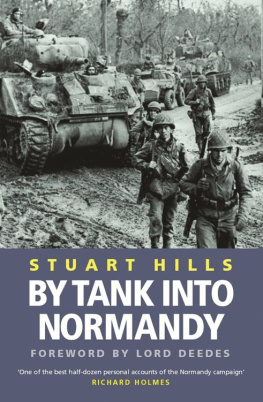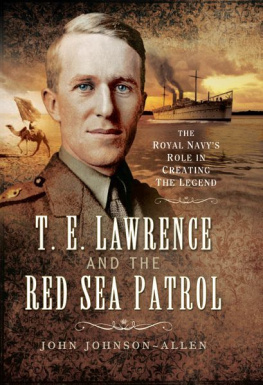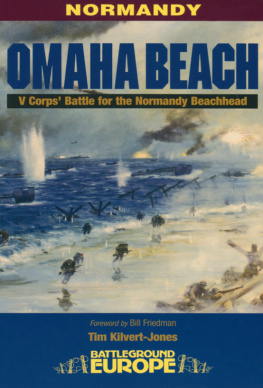BEACHHEAD NORMANDY
Related Potomac Titles
Shattered Sword: The Untold Story of the Battle of Midway
Jonathan Parshall and Anthony Tully
War in the Boats: My WWII Submarine Battles
William J. Ruhe
TOM CARTER
BEACHHEAD NORMANDY
AN LCTS ODYSSEY

Copyright 2012 by Potomac Books, Inc.
Published in the United States by Potomac Books, Inc. All rights reserved. No part of this book may be reproduced in any manner whatsoever without written permission from the publisher, except in the case of brief quotations embodied in critical articles and reviews.
Library of Congress Cataloging-in-Publication Data
Carter, Tom, 1955
Beachhead Normandy : an LCTs odyssey / Tom Carter. 1st ed.
p. cm.
Includes bibliographical references and index.
ISBN 978-1-59797-710-4 (hardcover : alk. paper)
ISBN 978-1-59797-797-5 (electronic)
1. World War, 19391945CampaignsFranceNormandy. 2. World War, 19391945Amphibious operations. 3. World War, 19391945Tank warfare. 4. World War, 19391945Naval operations, American. 5. Landing craftUnited StatesHistory20th century. I. Title.
D756.5.N6C378 2012
940.5421422dc23
2012018882
Printed in the United States of America on acid-free paper that meets the American National Standards Institute Z39-48 Standard.
Potomac Books
22841 Quicksilver Drive
Dulles, Virginia 20166
First Edition
Since I intended this book to honor
my dad and his World War II shipmates,
it seems fitting that it should be dedicated
to the memory of my mom,
Alta Mae Brantley Carter
19262009
Tennessee farm girl,
Manhattan Project security clerk, Oak Ridge, 19451946,
bookkeeper,
mentor,
pal
CONTENTS

Map by Chad Blevins

Map by Chad Blevins
PREFACE
The three brown and brittle pages of my fathers D-Day Diary and the story behind it have always been a major part of my familys history. To my two older brothers, my younger sister, and I, his service as a gunners mate aboard a landing craft at Normandy was somehow clearer than his job as an accountant. At an early age, we learned the significance of terms like LCT and Omaha Beach. We grew up knowing the difference between a 20mm and a quad 40 the way other kids grew up knowing the difference between a tricycle and a bicycle. At first, Dads story stayed in a box at our grandparents house, and on many Sunday afternoons while the adults chatted over the remains of dinner we would dig it out of the closet and read it once more.
Another box at home contained his small, out-of-focus photographs of men named Pequigney and Carlson and Johnson, Cromer and Kelly and Kleen, and we studied them until we thought we knew these men. Dads hobby was painting, and of course our favorite was his painting of the little ship LCT 614 hitting the beach, guns blazing, surrounded by dead and wounded soldiers in the water. And he had lots of funny stories about his shipmates, of how he lied about his age to join the navy when he was fifteen, of getting wounded while souvenir hunting, and of how he ended his navy service as a quad 40 mount captain on the pre-commissioning crew of the destroyer USS Joseph P. Kennedy, Jr. (DD 850).
But as childhood interests turned into careers, we read his story and looked at the photographs less and less. We didnt even notice when Dad gave the painting away to a veterans organization. The stories ended in September 1984 when Dad died of cancer. That last June, Dad closely followed the television coverage of the fortieth anniversary of the invasion, and he mentioned how he wished he had had the chance to return to Normandy. At that point, my brother Steve was determined to be on Omaha Beach on June 6, 1994.
In 1992, my brother Robert decided to accompany Steve, and in 1993 a generous gift from my mother-in-law allowed me to go along. As we began preparing for the trip in earnest, we all realized how little specific detail we knew about the 614. Where in England did it deploy? Where on Omaha Beach did it land? When? What army units did it carry? What happened after that morning?
Although we had grown up reading stories of D-Day, we began rereading the classic works of the invasion to get some idea of what Dad experienced. However, we were surprised to learn that landing craft, tanks (LCTs), were disappointingly absent from popular history. Books written from the armys perspective mention LCTs only as the men go ashore from them. Cornelius Ryans The Longest Day, for instance, or Joseph Balkoskis Beyond the Beachhead give LCTs one-sentence passing references.
Even books chronicling the navys role in the invasion, like Samuel Eliot Morisons History of the U.S. Naval Operations in World War II, give only the briefest comments about these craft. The only LCT exploits to get much attention at all were Lt. Dean Rockwells decision not to launch the amphibious (Duplex Drive [DD]) tanks into the rough sea but to land them directly onto the beach and LCT 30s fatal charge through the obstacles to land her cargo. Edward Ellsbergs The Far Shore chronicled Operation Mulberry, the construction and use of the artificial harbors through which the invading armies were kept supplied, but he never mentions any individual LCT or describes their work in any detail.
Oddly, despite such skimpy coverage in the books, LCTs are an inescapable presence in the photographs of the invasion. Flipping through several books about the invasion, I counted fully a third of the pictures of the invasion fleet that either featured an LCT prominently or caught one lurking in the background. The photographs attest clearly to the important, busy, ubiquitous role of LCTs both during and after the invasion, but the writers for some reason do not give the little craft commensurate coverage in their stories. Going by the written word alone, a reader could get the impression that LCTs pop up out of nowhere, deposit men and vehicles on the beach, and then promptly return to limbo.
At the height of all this catch-up learning, I was finishing work toward a PhD in journalism at the University of Tennessee. Having been in the navy (like Dad, I left the service as a third-class gunners mate aboard a destroyer) and a newspaper reporter, and now as a newly trained academic researcher, I decided to put my experience and skills to work to fill in these gaps. Since the secondary sources (published histories) had painted only broad strokes, I knew we would have to turn to primary sourcesnavy records and first-person accounts.
The first place to look was in the primary sources we already had at hand. Dads diary seemed to give us the most direct detail about his experience during the invasion itself. It has several obvious historical errors, such as mentioning the battleships Oklahoma (sunk at Pearl Harbor and never repaired) and Nevada (which supported the landing at Utah Beach, not Omaha). These errors indicated we couldnt take his account as complete truth, but it was the fullest description we had of an LCT in action on D-Day.
Even if it were short on fact, it was perhaps long on leads, although they were quite subtle. For instance, it did not tell us which army unit the 614 carried ashore or where, but it did say the craft carried bulldozers rather than tanks, indicating an engineering unit. Dad wrote that Pequigney relieved him at the wheel right at H-Hour, the time the first wave of assault troops began reaching shore, so we knew that the 614 went ashore after the first wave but still relatively early in the dayprobably around 7 a.m. Also, the mention of LCT 590 seemed to be an interesting lead. Since Dad mentioned that ship landed alongside the 614, the report of its loss might provide circumstantial information about what was happening at that particular place and time. One of Dads photographs pictured the men of an LCT crew and had a full paragraph on the back:
Next page


